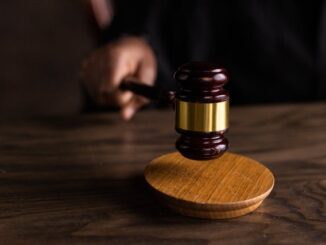
As I walked down the bustling streets of Ontario one brisk autumn afternoon, little did I know that a routine stroll would soon turn into a tumultuous tumble. The culprit? A seemingly innocuous crack in the pavement, hidden beneath a carpet of fallen leaves. That split second of misfortune led to a cascade of consequences, from physical pain to navigating the complexities of liability in the aftermath of a trip and fall accident.
Trip and fall accidents are more than just minor inconveniences; they can result in serious injuries and have significant legal implications. In Ontario, where I reside, such accidents are a common occurrence, often caused by a variety of obstacles that lurk in plain sight.
Identifying Hazards: The Common Culprits
In urban environments like Ontario’s cities and towns, hazards that contribute to trip and fall accidents abound. Uneven pavements, cracked sidewalks, potholes, and poorly maintained public spaces are frequent offenders. Often, these hazards are exacerbated by seasonal changes—like the accumulation of snow and ice in winter or the proliferation of fallen leaves in autumn—that obscure underlying dangers.
For instance, that fateful crack in the sidewalk where I stumbled could have been caused by tree roots or simply wear and tear over time. These hazards are not always immediately noticeable, especially to pedestrians who are preoccupied with navigating their surroundings.
The Fall and Its Fallout: Personal and Legal Ramifications
My trip and fall resulted in a fractured wrist and sprained ankle, necessitating medical attention and weeks of rehabilitation. Beyond the physical pain, there were financial implications—medical bills, lost wages from missed work, and the emotional toll of coping with a sudden injury.
In Ontario, determining liability in trip and fall cases hinges on several factors. Property owners, whether they be municipalities, businesses, or private individuals, have a duty of care to maintain their premises in a reasonably safe condition. This duty includes regular inspections to identify hazards and promptly addressing any dangers that could foreseeably cause harm.
Liability often boils down to whether the property owner knew or should have known about the hazard that caused the accident. For instance, if the crack in the pavement had been reported to the municipality but not repaired in a timely manner, they could be held liable for negligence. Similarly, businesses must ensure their premises are safe for customers and employees, which includes addressing any known hazards promptly.
Navigating the Legal Landscape
In the aftermath of my accident, navigating the legal landscape was daunting. Seeking compensation for medical expenses and other damages requires understanding the intricacies of Ontario’s legal system. Consulting with a personal injury lawyer proved invaluable, as they guided me through the process of filing a claim and negotiating with insurers.
In Ontario, the Occupiers’ Liability Act governs the responsibilities of property owners regarding the safety of those who enter their premises. This legislation outlines the duty of care owed to visitors and specifies that occupiers must take reasonable steps to prevent foreseeable harm. For victims of trip and fall accidents, proving negligence often involves gathering evidence, such as photographs of the hazard, witness statements, and documentation of medical treatment.
The Role of Comparative Negligence
It’s important to note that liability in Ontario can also be influenced by the concept of comparative negligence. This legal principle acknowledges that both the injured person and the property owner may share responsibility for the accident. For instance, if it’s determined that I was distracted at the time of the fall and not paying attention to my surroundings, my compensation could be reduced proportionally.
Conclusion
Reflecting on my journey from victim to advocate for awareness, I’ve come to appreciate the complexities involved in trip and fall accidents in Ontario. From the hazards that lurk beneath our feet to the legal principles that govern liability, these incidents can have far-reaching consequences. As Ontarians, we all share a responsibility to maintain safe environments and uphold our duty of care to one another.
While my experience was undoubtedly challenging, it has empowered me to advocate for greater awareness of trip and fall hazards and the importance of accountability. By sharing my story, I hope to shed light on the realities faced by victims and underscore the need for proactive measures to prevent such accidents in our communities.



